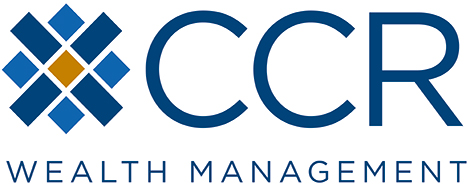Tips for Getting the Most Benefit from a 529 Plan
A 529 plan is tax-advantaged to help families save for future college costs.
There are two types of 529 plans: Prepaid Tuition Plans and College savings Plans. While the nuances of each type of plan can be rather complex, in very simple terms, a Prepaid Tuition Plan allows you to lock-in tuition costs at today's rates—effectively allowing you to avoid the ever-rising costs of tuition. A College Savings Plan, on the other hand, is a tax-advantaged investing account.
Both are excellent vehicles to save for college, in large part because of the tax-free growth. In addition, many states offer tax breaks and/or credits to residents for using the state-sponsored plan. But you should also know that a 529 plan may not be the best vehicle for you depending on a lot of factors.
Here are some suggestions for getting the most benefit from a 529 plan.
- Start as early as possible. Because of the power of compounding, it’s best to start saving as soon as possible. The earlier you create an account, the more years of growth it provides. Ideally, the plan and your child grow together.
- Consider using the five-year option. As long as your contribution is at least $18,000, and you spread it over a five-year period, you are allowed to contribute as much as $90,000 to a 529 plan without incurring gift taxes. The amount will be pro-rated over the next five years—if you deposit $85,000, it will be applied as $17,000 each year, leaving you with $1,000 in unused annual exclusion. A benefit of the five-year period for you, the contributor, is to minimize federal gift taxes. This option might be most applicable for grandparents as part of their estate planning.
- Pay attention to fees and performance. Investment firms sell many 529 plans, and the ongoing fees and commissions you pay them vary. The plan itself probably has a fee. If the plan offers underlying mutual funds, there are annual fees, and some of them can be relatively high. Some plans offer underlying ETFs, which generally offer lower fees. But no matter the type of investment, fees are required by law to be clearly disclosed. Further, pay close attention to the performance of the plan sponsors and the underlying fund managers. Most of the time, this information is readily available on a firm’s website, including a FAQ section with details on fees, performance, and investment options.
- Compare several state plans. While some states offer tax breaks for residents who use their 529 plans, you aren’t limited to the plan from your own state. You can open new accounts in or move existing accounts to other states. But make sure you don’t overlook the potential benefits of using your state’s plan.
- The more plans, the better. One child can be the beneficiary of several plans. Parents and both sets of grandparents may set them up, for example. Or grandparents, say, could contribute to accounts that parents create. The potential disadvantage here is that the money then belongs to the owner of the account.
- Avoid short-changing your retirement plan. Don’t get so excited by the idea of maximizing a 529 plan that you forget one essential guideline: Parents should fund their own retirement accounts ahead of funding college accounts for the kids. There are many places to find a little extra money for kids’ 529 plans. A few possibilities are cash gifts from relatives, contributions from grandparents, tax refunds, or bonuses. But the worst place to find that money is your own retirement fund. It isn’t wise to sacrifice a healthy retirement plan in order to create a healthy 529 plan.
- One final word from a financial advisor. Not only are there a lot of 529 plans to examine, but the rules surrounding them change from year to year. And while earnings on qualified withdrawals for K-12 expenses are federal tax-free right now for everyone, withdrawals may or may not be state tax-free. That means if you need to withdraw money to pay for tuition at a K-12 school, we need to determine whether or not there will be state tax penalties.
For these reasons and a host of others, CCR looks forward to helping you navigate the different 529 plans and helping you determine the best option for you and your family.
Disclosures:
Investors should consider the investment objectives, risks, charges and expenses associated with municipal fund securities before investing. This information is found in the issuer's official statement and should be read carefully before investing. Investors should also consider whether the investor’s or beneficiary’s home state offers any state tax or other benefits available only from that state’s 529 Plan. Any state-based benefit should be one of many appropriately weighted factors in making an investment decision. The investor should consult their financial or tax advisor before investment in any state's 529 Plan.
Follow us on social media for more timely content delivered directly to your news feed!
